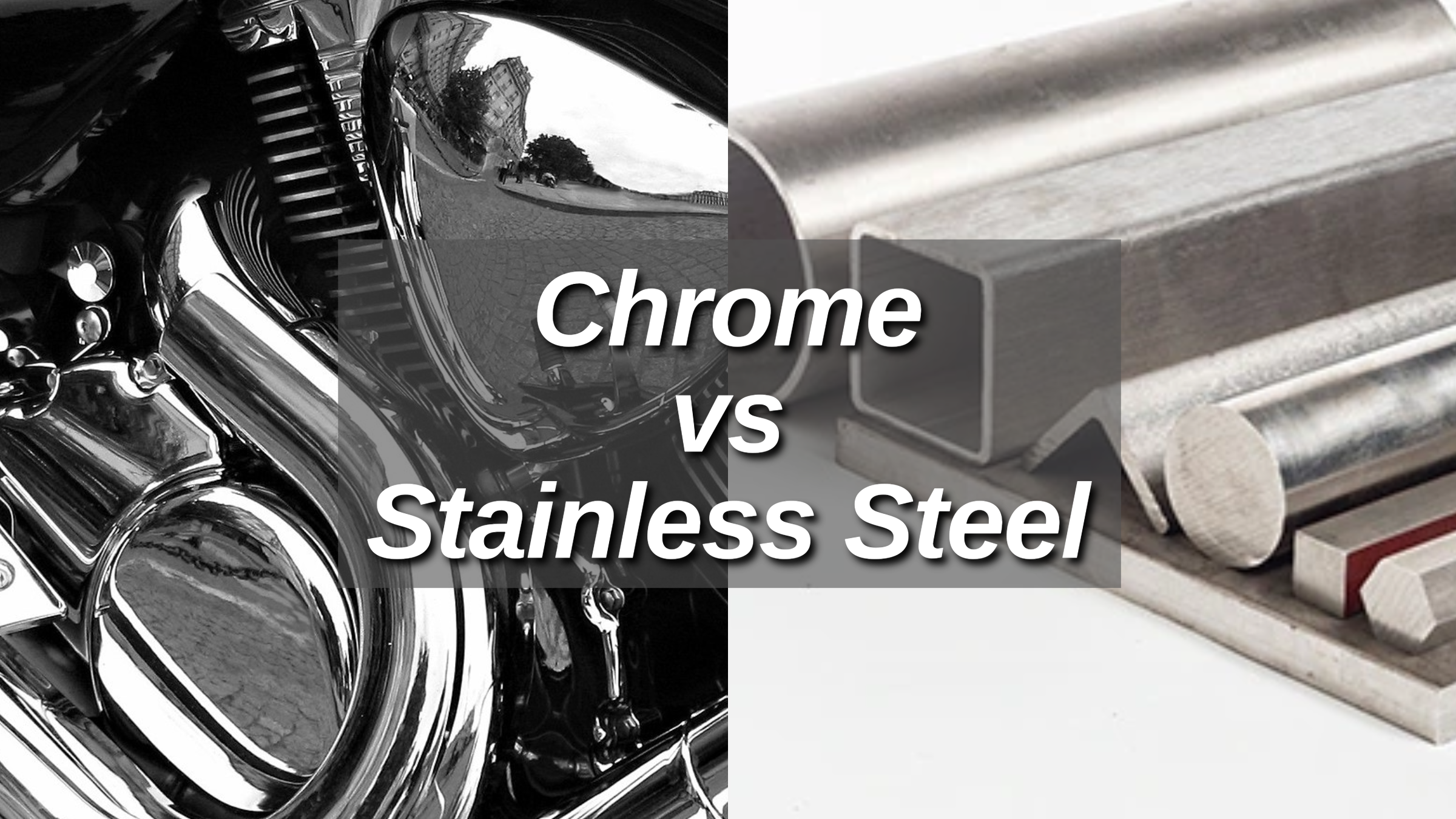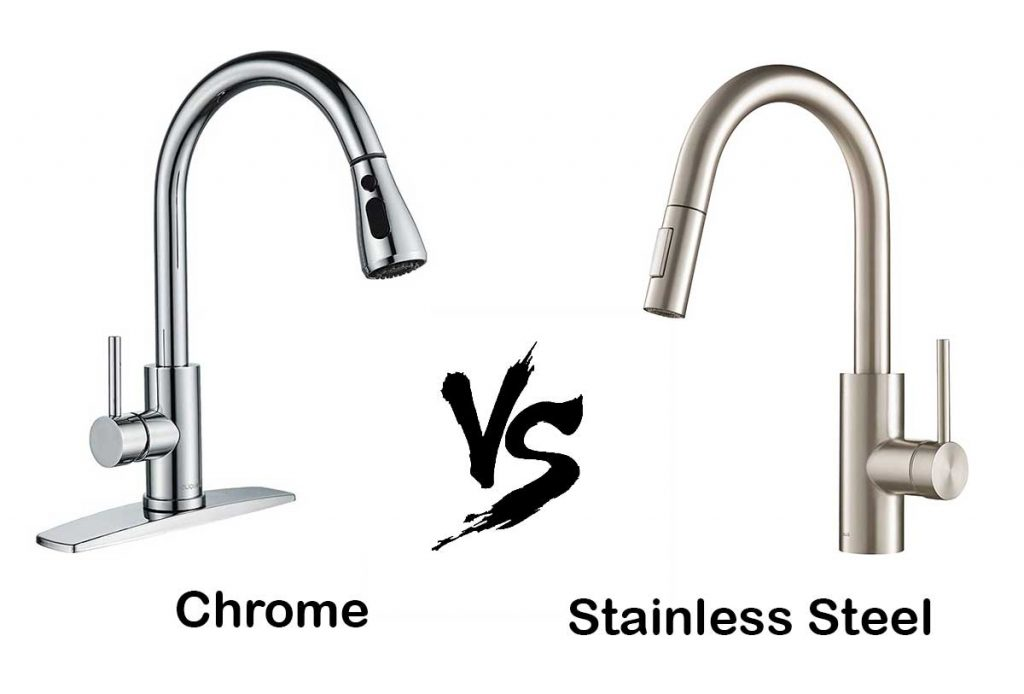Chrome vs Stainless Steel: A Comprehensive Comparison

This article compares properties, uses, longevity, care and costs of Chrome vs Stainless Steel, examining their key differences.
Introduction
A common comparison arises between chrome ("chromium plating") and stainless steel.
Chrome offers a high-reflectivity surface due to its inherent passivation layer, while stainless steel prioritizes corrosion resistance through the formation of a chromium oxide layer on its iron-based matrix.

Source: guidingpartnerships.com
Chrome vs Stainless Steel: Composition
Elemental Composition
Chrome
Chrome, in the context of this comparison, refers to chromium plating. It's a thin layer of pure chromium (around 0.001 to 0.003 inches thick) electroplated onto a base metal, typically steel or plastic.
Stainless Steel
This is an alloy, meaning it's a metal mixture. The primary elements are:
- Iron: Makes up the bulk of stainless steel, typically ranging from 60% to 70%.
- Chromium: A crucial element, present at a minimum of 10.5% by weight. This chromium content is what differentiates stainless steel from regular steel.
Alloying Elements
In addition to the primary elements, both chrome and stainless steel can include alloying elements to enhance their properties.
Chrome
During the plating process, trace amounts of other elements like copper (Cu) or nickel (Ni) might be introduced. These can affect the color and finish of the chrome plating.
Stainless Steel
Stainless Steel's properties can be further enhanced by adding other elements.
- Nickel: Improves corrosion resistance, especially in high-moisture environments. It also increases strength and ductility. (Not always present, but common in many types of stainless steel)
- Molybdenum: Enhances resistance to pitting corrosion, particularly in chloride-rich environments.
- Manganese: Improves workability and hardenability.
- Silicon: Increases strength and helps prevent surface defects during manufacturing.
Chrome vs Stainless Steel: Properties
Explore the physical and mechanical properties of chrome and stainless steel to understand their strengths and weaknesses
Physical Properties
| Property | Chrome | Stainless Steel |
|---|---|---|
| Density | Relatively high (around 7.2 g/cm³) | Varies (7.8 - 8.0 g/cm³) |
| Hardness | Relatively hard, but can scratch or chip | Generally harder and more scratch-resistant |
| Melting Point | Very high (around 1857°C) | Lower (1400°C - 1500°C) |
| Conductivity | Good conductor of heat and electricity | Poor conductor of heat and electricity |
Mechanical Properties
| Property | Chrome | Stainless Steel |
|---|---|---|
| Tensile Strength | Moderate | Generally higher |
| Yield Strength | Moderate | Higher |
| Ductility | Brittle, low | Varies, some more ductile |
| Impact Resistance | Poor | Generally better, but can still dent |
Chrome vs Stainless Steel: Corrosion Resistance
Chrome
Resistance to Corrosion
Chrome plating offers some level of corrosion resistance by creating a barrier between the underlying metal and the environment. However, this resistance is not as strong as stainless steel.
Vulnerabilities
Chrome plating can degrade over time, especially when exposed to moisture, salt, and harsh chemicals. Scratches or cracks in the plating can expose the underlying metal to corrosion, leading to rust (if the base metal is steel).
Stainless Steel
Resistance to Corrosion
Stainless steel excels in corrosion resistance. The key lies in its chromium content.
When exposed to air or oxygen, a thin, invisible layer of chromium oxide forms on the surface. This layer acts as a passive film, self-healing if scratched, and effectively shields the underlying steel from corrosion.
Types of Stainless Steel and Their Corrosion Resistance
- Austenitic Stainless Steel (e.g., 304, 316): Most common type, offers good general corrosion resistance, excellent for indoor or mildly corrosive environments.
- Ferritic Stainless Steel (e.g., 430): Magnetic, good resistance to oxidation and some chemicals, but less corrosion resistant than austenitic grades.
- Martensitic Stainless Steel (e.g., 410): Magnetic, high strength and hardness, but lower corrosion resistance than other types.
- Duplex Stainless Steel: Combines austenitic and ferritic properties, offering high strength and excellent corrosion resistance, especially in chloride-containing environments (e.g., seawater).
Comparison Between Chrome and Stainless Steel
| Material | Resistance to Corrosion | Vulnerabilities |
|---|---|---|
| Chrome | Some resistance, creates a barrier | Degrades over time with moisture, salt, and chemicals. Vulnerable to scratches exposing underlying metal to rust. |
| Stainless Steel | Excellent | Varies depending on type. Scratches can generally self-heal due to the chromium oxide layer. |
Chrome vs Stainless Steel: Maintenance and Care
Chrome
Cleaning Methods:
- Use a soft, damp microfiber cloth for regular cleaning.
- Avoid harsh chemicals or abrasive cleaners, as they can scratch the plating.
- For stubborn stains, a mild soap solution can be used, followed by thorough rinsing and drying.
Maintenance Practices:
- Regularly wipe down chrome surfaces to prevent dust and dirt buildup.
- Avoid using chrome in areas with high humidity or frequent exposure to water, salt, or harsh chemicals.
- Reapplication of chrome plating might be necessary over time, especially if the underlying metal starts to show through scratches.
Stainless Steel
Cleaning Methods:
- Similar to chrome, use a soft, damp microfiber cloth for daily cleaning.
- A mild soap solution can be used for tougher grime, followed by rinsing and drying.
- Stainless steel cleaners specifically formulated for fingerprint resistance can be used occasionally.
Maintenance Practices:
- Regular cleaning helps prevent water spots and fingerprints.
- For stubborn stains, a vinegar solution can be used, followed by rinsing and drying (avoid on matte finishes).
- Stainless steel is generally low-maintenance, but some types may require occasional polishing with a stainless steel polish to maintain shine.
Comparison of Maintenance Requirements
| Feature | Chrome | Stainless Steel |
|---|---|---|
| Cleaning Difficulty | Moderate | Easy |
| Susceptibility to Scratches | High | Moderate |
| Frequency of Cleaning | Regular | Regular |
| Special Requirements | Avoid harsh chemicals | May require specific cleaners for certain finishes |
| Overall Maintenance | More demanding | Less demanding |
Chrome vs Stainless Steel: Cost
Initial Cost
Cost of Materials
Chrome plating is generally less expensive than stainless steel itself.
Cost of Fabrication
Fabrication costs can vary depending on the complexity of the product, but chrome plating might involve additional steps compared to using pre-made stainless steel components.
Long-term Cost
Maintenance Expenses:
- Chrome requires more frequent cleaning and is susceptible to damage from harsh chemicals.
- Stainless steel is generally easier to maintain and requires less frequent cleaning with readily available cleaning solutions.
Replacement Costs:
- Chrome plating can wear down over time, especially in harsh environments. Re-plating might be necessary, which incurs additional costs.
- Stainless steel, with proper care, can last a lifetime and rarely needs replacement.
Cost-effectiveness Comparison
| Feature | Chrome | Stainless Steel |
|---|---|---|
| Initial Material Cost | Lower | Higher |
| Fabrication Cost (Simple) | Similar | May be slightly higher |
| Maintenance Cost | Higher | Lower |
| Replacement Cost | Can be high (replating) | Generally higher (material) |
| Overall Cost-Effectiveness | Lower upfront, higher long-term | Higher upfront, lower long-term |
Chrome vs Stainless Steel: Applications
Automotive Industry
Chrome
Primarily used for decorative trim elements like emblems, badges, and grilles due to its high shine and affordability. However, its susceptibility to scratches and corrosion limits its use on functional parts.
Stainless Steel: Used for exhaust components, wheel trims, and some decorative accents due to its superior durability, heat resistance, and corrosion resistance.
Aerospace Sector
Chrome
Rarely used due to its weight and limited corrosion resistance in harsh environments.
Stainless Steel
Widely used for aircraft bodies, engine components, and other structural elements due to its high strength-to-weight ratio, excellent corrosion resistance, and ability to withstand extreme temperatures.
Manufacturing and Machinery
Chrome
Used for some decorative parts on machinery or for components requiring a low coefficient of friction, such as pistons. However, its limited wear resistance restricts its use.
Stainless Steel
A popular choice for machine parts, tools, and various industrial equipment due to its durability, corrosion resistance, ability to withstand high temperatures and pressures, and ease of cleaning and sterilization.
Energy Sector
Chrome
Limited use due to its corrosion concerns, especially in environments with high humidity or salt spray.
Stainless Steel
Used in various components of power plants, including turbines, heat exchangers, and piping systems, due to its excellent corrosion resistance, high-temperature tolerance, and ability to withstand pressure.
Conclusion
While both chrome and stainless steel offer a sleek aesthetic, their strengths lie in different areas.
Chrome has a high shine and affordability, making it ideal for decorative applications. However, stainless steel reigns supreme in terms of durability, corrosion resistance, and ease of maintenance.
When considering long-term cost-effectiveness and functionality, stainless steel often emerges as the better choice, especially for demanding applications.
Bring Your Design into Life with Unionfab
Unionfab offers varieties of materials for 3D Printing, including Stainless Steel 316, Stainless Steel 17-4PH and Multi-color Resin.
Partner with us to breathe life into your designs, experience the freedom of rapid prototyping, and bring your vision to the world!


